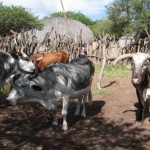A Tale of Two Deltas
by Roddy Bray
In northern Botswana we found areas like the Okavango Delta and the Chobe teeming with wildlife, and ecotourism making a major contribution to the economy. Yet just to the north, across the rivers in Namibia’s Caprivi region we hardly saw a single animal or bird… not even the ubiquitous monkeys. We began to ask why the contrast should be so stark.
As we have travelled through Africa, we have seen the potential of ecotourism to preserve wildlife and tackle poverty. Nowhere is this better illustrated than in northern Botswana. The north of the country is almost entirely reserved for wildlife, and is famous for its predators and home to over 120,000 elephants. In particular, the Okavango River fans into the Kalahari desert, creating a vast region of rivers, islands and waterways. This delta was referred to dismissively as ‘the swamps’ at the time of independence, of no economic value. Today it has become the premier wildlife area in southern Africa, with lodges charging as much as $1,000 per person/ night. Tourism recently became the No.2 earner for Botswana (after diamonds) overtaking its strong cattle industry. But over the border, in the Caprivi region of Namibia, the contrast is striking.
Namibia’s Caprivi, a corridor of land that separates Botswana from Angola and Zambia is, if anything, even better suited to wildlife than northern Botswana. It too has a delta system, Mamili. It shares the Chobe and Kwando rivers with Botswana. On the south bank, in Botswana, there are huge herds of elephant and large numbers of other species, but in the two weeks we spent in the Caprivi we saw hardly any wildlife. The Caprivi, in fact has advantages over the land to the south. It has large grasslands and the Zambezi River on its northern border. The Caprivi should be even more abundant in wildlife than Botswana, and huge herds should be migrating across the rivers. Yet Caprivi statistics from 2008 shows that wildlife numbers are tiny – most species in the Kwando region, home to most of the nature reserves, have less than 100 members. Only 0.1% of the population were employed in ecotourism full time, and the total income from all safari concessions was little more than $500,000 p.a., and almost all of this was from hunting. The contrast with Botswana could not be sharper. Read on
Tales and Traditions of Southern Africa
LISTEN TO: Book 3 The Zulu, Part I History
Let the environment guide our development
Johan Rockstroem
TEDis a small nonprofit devoted to Ideas Worth Spreading. It started out (in 1984) as a conference bringing together people from three worlds:Technology, Entertainment, Design.


